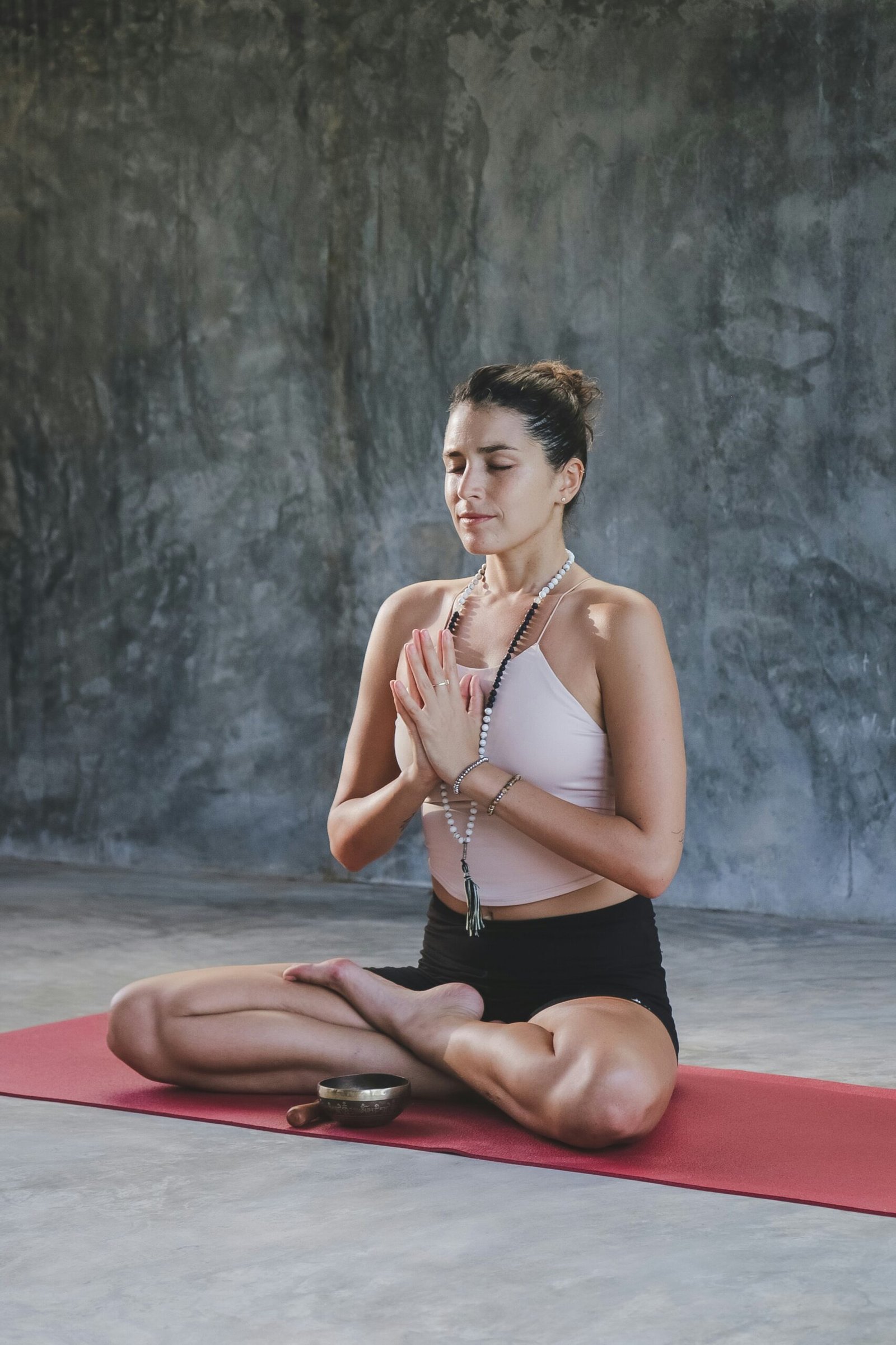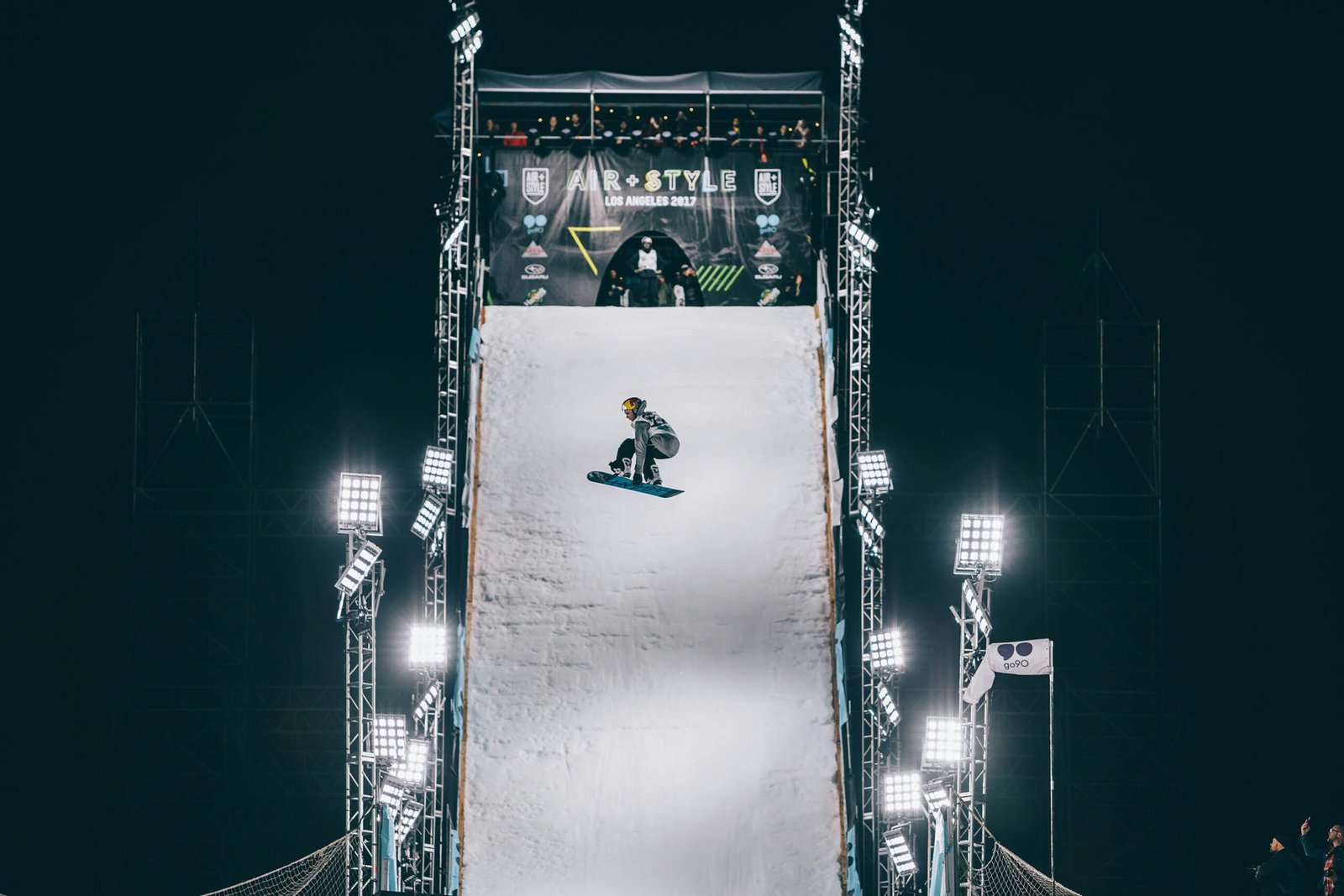Understanding Freestyle Swimming
Freestyle swimming, often regarded as one of the most efficient strokes, occupies a prominent position in both competitive swimming and recreational activities. This stroke’s significance stems from its speed and versatility, making it a preferred choice for swimmers of various skill levels. At its core, freestyle swimming involves a coordinated combination of body position, arm movement, leg kicks, and breathing techniques, which together create a fluid and streamlined motion through the water.
One of the fundamental principles of freestyle swimming is maintaining an optimal body position. Swimmers should strive to keep their bodies flat and horizontal in the water to reduce drag. A slight rotation of the hips is essential, allowing the shoulders to roll as the arms enter the water. This streamlined alignment not only enhances propulsion but also encourages energy conservation, which is crucial for longer distances.
Movement control is critical in freestyle, involving a rhythmic and systematic motion of the arms and legs. The arms should alternate in a windmill motion, with each stroke reaching forward in a long arc. Following the arm movement, the legs should perform a continuous flutter kick, providing additional propulsion and maintaining balance in the water. Beginners often find it helpful to focus on mastering these movements individually before attempting to integrate them into a cohesive stroke.
Breathing techniques are another essential component of freestyle swimming. While the swimmer’s face is in the water, breathing can be challenging. It is vital to turn the head to the side during the arm recovery phase, allowing for a breath without disrupting the body’s alignment. Practicing bilateral breathing can help swimmers develop a balanced stroke, promoting symmetry and endurance. Understanding these fundamentals is key for those looking to enhance their freestyle swimming skills and enjoy the many benefits this stroke has to offer.
Essential Gear for Freestyle Swimming
When embarking on the journey of mastering freestyle swimming, having the right equipment is crucial for both comfort and performance. Good swimwear serves as the foundation for an effective swimming experience. For beginners, it is advisable to choose a swimsuit that fits well, is made of durable material, and offers the right level of support. Options vary from one-piece swimsuits to swim trunks, catering to individual preferences and body types.
Goggles are another essential piece of gear for freestyle swimmers. They protect the eyes from chlorine and allow for clear vision underwater, contributing to a more enjoyable swimming experience. When selecting goggles, it is important to find a pair that provides a comfortable fit without too much pressure around the eyes. Various styles are available, including those with mirrored lenses for outdoor swimming, which help reduce glare.
Swim caps are not just for aesthetic purposes; they also serve practical functions. A swim cap keeps hair out of the face and reduces drag while swimming, making it a valuable accessory for those eager to improve their technique. Additionally, swim caps can help maintain body temperature in cooler pool waters, enhancing overall comfort during a swim session.
While not mandatory, optional accessories like fins and training paddles can provide significant benefits for beginners. Fins help improve kick strength and provide propulsion, while training paddles enhance arm strength and promote proper stroke technique. These tools can support skill development, making them ideal choices for those commencing their freestyle swimming journey.
Selecting the right gear is instrumental for beginners who wish to feel comfortable and perform effectively in the water. Each piece of equipment plays a vital role in achieving a successful swimming experience, thereby encouraging continued practice and improved skills.
Key Techniques for Beginner Swimmers
Mastering the art of freestyle swimming involves understanding several fundamental techniques that can significantly enhance a swimmer’s efficiency in the water. One of the most critical aspects is the arm recovery phase. In freestyle swimming, swimmers should focus on keeping their arms relaxed while drawing them out of the water during recovery. The arms should move in a controlled arc, allowing for a streamlined entry back into the water. To practice this technique, beginners can utilize dryland exercises such as resistance bands to mimic the stroke motion, reinforcing proper form without the resistance of water.
Another essential component is the kick technique. A strong, steady flutter kick is vital in maintaining momentum and balance during freestyle swimming. Beginners should aim for a compact kick that originates from the hips rather than the knees. To improve kick efficiency, swimmers may practice using a kickboard to isolate their legs and focus on developing a consistent rhythm. Incorporating drills, such as alternating between regular freestyle and kickboard drills, can also help refine this technique, ensuring that the kick complements the arm movements.
Additionally, mastering the body roll can greatly improve a swimmer’s overall performance. An effective body roll allows for a smoother stroke and enhances propulsion. Swimmers should aim to roll their bodies along the spine, ideally initiating the roll from the hips while keeping their heads stable. This technique not only aids in stroke efficiency but also facilitates better breathing. Beginners can practice this by incorporating gentle rolls during drills, ensuring they maintain body alignment and control throughout the process.
By focusing on these key techniques—arm recovery, kick methods, and body roll—beginners can establish a solid foundation for freestyle swimming. Regular practice and attention to these fundamentals will ultimately lead to improved performance and confidence in the water.
Breathing Techniques: A Vital Component
Breathing is a crucial aspect of mastering freestyle swimming, influencing both performance and comfort in the water. Properly synchronizing breath with strokes ensures that swimmers maintain a steady rhythm while also allowing for adequate oxygen intake. For beginners, this can be particularly challenging, yet it is fundamental to enhancing overall efficiency and technique.
One effective approach to breathing in freestyle swimming is bilateral breathing, where the swimmer alternates their breathing pattern, inhaling on both sides. This technique not only promotes a more symmetrical stroke but also aids in developing a better sense of balance within the water. By learning to breathe on both sides, swimmers can enhance their adaptability to varying conditions, such as waves or wind, which may affect their performance. It is recommended that beginners practice bilateral breathing in a controlled environment, gradually incorporating it into their routine as they become more comfortable.
Conversely, unilateral breathing, or breathing to one side only, can be more convenient and less mentally taxing for new swimmers. A common mistake when using this technique is turning the head too far, which can disrupt the body’s alignment and lead to poor stroke mechanics. To avoid this, beginners should focus on keeping their head in line with their body while turning just enough to create space for inhalation. Staying relaxed during this process is essential; swimmers should engage their core and maintain a streamlined position to ease the movement of their head.
Furthermore, maintaining a relaxed posture during breathing is vital. Tension can impede a swimmer’s ability to execute an effective stroke and breath. Therefore, during practice, it is beneficial for beginners to focus solely on their breathing technique without rushing, allowing for a smooth transition in air intake. Overall, mastering breathing techniques is an essential element in developing robust freestyle swimming skills.
Developing a Proper Kicking Technique
A proper kicking technique is fundamental in freestyle swimming as it contributes significantly to propulsion and maintaining an efficient body position in the water. Among the various kicking styles, the flutter kick is the most prevalent and effective for freestyle swimmers. The flutter kick involves a steady, alternating motion of the legs, where the feet remain relaxed and pointed, allowing them to remain near the water surface, thereby minimizing drag. Understanding and mastering the flutter kick is essential, especially for beginners who aim to enhance their swimming efficiency.
In addition to the flutter kick, swimmers can experiment with other kicking techniques, such as the dolphin kick and breaststroke kick, to diversify their skill set and improve overall strength. Each kick offers unique benefits; while the dolphin kick enhances core strength and fluidity, the breaststroke kick can improve leg strength and coordination. However, special emphasis should be placed on the flutter kick, as it serves as the primary propulsion method in freestyle swimming.
To develop a strong kicking technique, it is important for beginners to practice kicks in isolation. This can be accomplished using a kickboard, which allows swimmers to focus solely on their leg movements without the distraction of arm strokes. Training with a kickboard not only refines the kicking motion but also helps build endurance and strength in the leg muscles. Regularly incorporating drills that emphasize proper kicking technique into swim practices will significantly enhance propulsion and streamline the swimmer’s body in the water.
Strengthening leg muscles is also crucial to improve kicking efficiency. Swimmers can incorporate dryland exercises, such as squats, lunges, and calf raises, into their training regimen to build strength and power in their legs. By promoting proper kicking technique and leg strength, beginners will find themselves better equipped to master freestyle swimming and enjoy a more efficient swimming experience.
Creating a Practice Routine
Establishing a structured practice routine is vital for beginners looking to enhance their freestyle swimming skills. A well-organized plan allows swimmers to progressively develop their abilities while keeping them motivated. To create an effective routine, it is essential to incorporate a variety of components, including drills, endurance swims, and technique refinement.
Firstly, drills are crucial for targeting specific aspects of freestyle swimming. Beginners should focus on foundational elements such as body position, arm movement, and breathing techniques. A common drill is the “Catch-Up Drill,” where swimmers stroke one arm at a time while the other remains extended, promoting proper hand entry and body alignment. Incorporating these drills regularly into swimming sessions helps instill good habits and improve overall technique.
Next, endurance swims are an integral part of developing stamina and building confidence in the water. Allocate time in each session to swim longer distances at a comfortable pace. This not only enhances physical endurance but also allows swimmers to practice maintaining technique over longer periods. Aiming for a progressive increase in distance over each week can facilitate improvement and keep swimmers engaged.
Additionally, technique refinement is essential for maximizing efficiency in the water. Incorporate focused practice on aspects such as kick, rotation, and breathing. Spacing these elements throughout the week, along with recovery days, ensures that swimmers do not overstrain themselves while still making tangible progress.
Setting personal goals and tracking progress is fundamental for maintaining motivation. Beginners should establish both short-term and long-term objectives, such as improving lap times or mastering a specific drill. Keeping a swim log can help swimmers reflect on their performance, fostering a sense of achievement and encouraging continual improvement. Over time, this structured approach will significantly enhance freestyle swimming skills and foster a lifelong appreciation for the sport.
Tips for Overcoming Common Challenges
For many beginners, the journey to mastering freestyle swimming can be fraught with challenges. One of the most significant barriers is often the fear of water. This apprehension can stem from various sources, including previous negative experiences or a lack of familiarity with aquatic environments. To overcome this fear, it is essential to gradually acclimatize to the water. Start by sitting at the edge of the pool or standing in shallow water to build confidence. Engaging in breathing exercises, such as blowing bubbles or taking shallow breaths while submerged, can also help create a sense of comfort and control.
Another common obstacle faced by beginner swimmers is difficulty with breathing. Proper breathing technique is critical for efficient freestyle swimming and overall endurance. A practical approach to tackling this issue is to practice bilateral breathing during drills. This involves alternating breathing sides, which not only improves your ability to breathe rhythmically but also promotes greater balance and stroke symmetry. Additionally, beginners can focus on exhaling through the nose while submerged and turning the head to inhale when their body is in a natural swimming position. This technique will encourage consistency and reduce feelings of panic associated with breathing in water.
Fatigue is yet another challenge that many novice swimmers encounter. Long swimming sessions can be taxing for beginners, leading to discouragement and diminished motivation. To combat fatigue, it is advisable to implement interval training, which involves alternating periods of swimming with short rests. This strategy allows the body to recover while still developing endurance and technique. Moreover, incorporating dryland exercises, such as core workouts, can enhance overall strength and efficiency in the water. Utilizing these practical solutions and mental strategies will not only help overcome initial hurdles but also encourage persistence as one progresses in the art of freestyle swimming.
The Importance of Rest and Recovery
In the realm of freestyle swimming, the significance of rest and recovery cannot be overstated. As swimmers push their bodies to excel, they often overlook the vital role that adequate recovery plays in enhancing performance and preventing injuries. This aspect of training is essential for both novice and experienced swimmers alike, as it helps to restore energy levels, repair muscle tissue, and maintain overall physical health.
One fundamental recovery technique involves nutrition. Proper post-workout meals that include a combination of carbohydrates and proteins can expedite muscle repair and replenish glycogen stores that are depleted during strenuous swimming sessions. Foods rich in nutrients, such as lean meats, whole grains, and a variety of fruits and vegetables, provide the necessary fuel for the body to recover effectively. Additionally, adequate hydration is crucial, as even mild dehydration can negatively affect performance and hinder recovery. Swimmers should ensure they are consuming sufficient fluids before, during, and after training to maintain optimal levels of hydration.
Incorporating stretching routines into a swimmer’s recovery plan is another vital consideration. Stretching improves flexibility, which can enhance swimming efficiency by enabling a swimmer to achieve a more streamlined position in the water. Dynamic stretching before workouts and static stretching afterward can promote blood circulation and reduce muscle stiffness. Moreover, incorporating foam rolling or massages can alleviate muscle tension and improve overall recovery times.
Lastly, the effects of fatigue on swimming efficiency are significant. When swimmers fail to integrate sufficient rest into their regimen, they risk compromising their technique, speed, and endurance. Consequently, recognizing the importance of recovery can lead to better performance outcomes and a more enjoyable swimming experience. Prioritizing rest will not only enhance a swimmer’s capabilities but also contribute to a sustainable and fulfilling training journey.
Finding a Community and Getting Involved
Joining a swimming community or team can significantly enhance your journey in mastering the art of freestyle swimming. Engaging with others who share your passion not only fosters motivation but also creates a supportive environment to improve your skills. Many beginners often feel hesitant about diving into new activities alone, but swimming with others transforms the experience into a more enjoyable and fulfilling endeavor.
One productive avenue to explore is to enroll in swimming classes offered by local clubs or recreation centers. These classes are often tailored for various skill levels, ensuring that you can find a program suited to your needs. In these settings, you not only receive expert instruction but also have the opportunity to meet fellow learners who can become your workout partners. This community can encourage you to consistently show up and practice your freestyle techniques.
Additionally, local swimming clubs are another excellent resource. Many clubs host regular practice sessions, social events, and competitions that allow beginners to immerse themselves in the swimming culture. By participating in club activities, you can develop friendships and enjoy the camaraderie that comes from shared experiences. Moreover, these interactions can lead to valuable advice and insights, enhancing your swimming knowledge and technique.
In our digital age, online forums and social media groups dedicated to swimming can also serve as vital platforms for connection. These virtual communities allow you to share your progress and seek advice from seasoned swimmers and coaches globally. Engaging in discussions, sharing personal achievements, and seeking encouragement from others can bolster your confidence and keep you motivated on your freestyle swimming journey.
Ultimately, finding a community, whether through local classes, clubs, or online forums, can significantly enrich your swimming experience. The social interactions and learning opportunities provided by these groups are invaluable for beginners looking to improve their freestyle abilities.








Leave a Reply